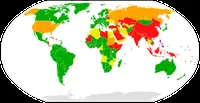Law School Applications Surge in 2024, Diversity Increases Despite Concerns
Law school applications rose 5.7% in 2024, with increased diversity among applicants. The second-largest pool in five years defied concerns about the Supreme Court's admissions ruling impact.

The legal education landscape in the United States experienced a significant uptick in interest during 2024, as reported by the Law School Admission Council. The number of aspiring lawyers seeking admission to American Bar Association-accredited law schools increased by 5.7% compared to the previous year, totaling 64,912 applicants.
This surge marks the second-largest applicant pool in the past five years, surpassed only by the 71,035 applicants in 2021, a spike attributed to the pandemic. The 2024 figures represent an increase of 3,478 individuals vying for spots at the 197 ABA-accredited institutions across the nation.

The growth in applications is particularly noteworthy given the historical context of legal education in the United States. The Law School Admission Test (LSAT), a crucial component of the application process, has been in use since 1948, evolving alongside the changing landscape of legal education. The American Bar Association, founded in 1878, has played a pivotal role in shaping legal education standards, gaining the authority to accredit law schools in 1923.
Contrary to concerns stemming from the U.S. Supreme Court's 2023 decision barring race consideration in college admissions, the applicant pool demonstrated increased racial diversity. Applicants of color comprised nearly 48% of the total, up from about 47% in 2023. Specifically, Black applicants increased by 7.4%, Hispanic applicants by 9.6%, and Asian applicants by 6.7%. White applicants saw a more modest increase of 3.3%.
Susan Krinsky, interim president of the Law School Admission Council, attributed some of these gains to targeted efforts promoting legal education to historically underrepresented groups. These initiatives included strategic advertising on social media platforms, aiming to broaden the reach and appeal of legal education.
The current trend suggests a potential continuation of growth in the applicant pool for 2025. Early indicators show a 21% increase in LSAT test-takers compared to the previous year, with registrations for the September exam up by 14%.
It's worth noting that the journey to becoming a lawyer in the United States is steeped in history. The first law school was established at the College of William & Mary in 1779, while Harvard Law School, founded in 1817, holds the distinction of being the oldest continuously operating law school in the country. The standard three-year law program culminates in graduates facing state-specific bar exams, a tradition that has evolved since the admission of Arabella Mansfield as the first woman to practice law in the U.S. in 1869.
As the legal education landscape continues to evolve, the increased diversity and interest in law school applications reflect a dynamic and changing field, building upon a rich history of legal education in the United States.


































